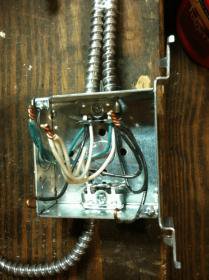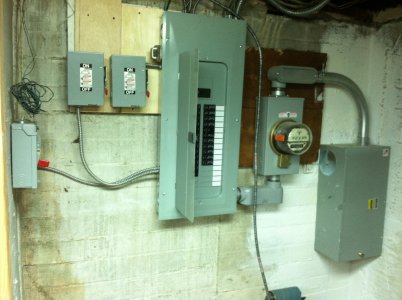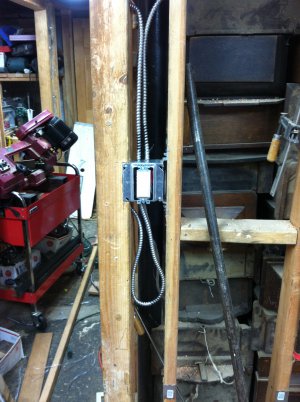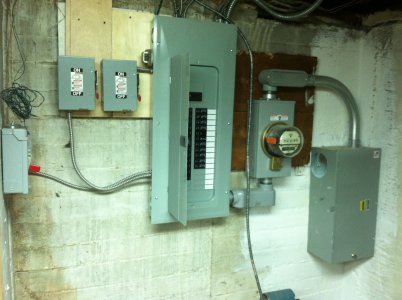- Joined
- Sep 22, 2010
- Messages
- 7,223
Finally got the mess and clutter cleaned up in the basement and shop.
Overhead shop wiring is next. I am running my own wires.
Make sure your lights are always on a separate dedicated circuit(s) from the outlets.
In NYC, a 4x4 box is required with metallic conduit (MC) or BX.
The circuit runs from the dedicated breaker to each switch box, then out to the light(s) controlled in each area and then to the next switch box. The circuit wiring is simpler to understand and implement if you bring power into the switch box then to each light and then to a switch. I'd rather do my splices at ground level then standing on a ladder. Each box has 3 MC cables, the incoming, outgoing and fixture cables.
To help me remember while I am working, I created a mockup of the splicing:

I use the three cample clamps in the box and make the top two in and out lines and the bottom cable goes to the fixture. That one has to be bent up because all three go up to the joists.
The wires go through the top plate of the walls and, when going across joists crossways, NYC requires holes in the joists for the wire rather than staples.
:tiphat: Nelson

Overhead shop wiring is next. I am running my own wires.
Make sure your lights are always on a separate dedicated circuit(s) from the outlets.
In NYC, a 4x4 box is required with metallic conduit (MC) or BX.
The circuit runs from the dedicated breaker to each switch box, then out to the light(s) controlled in each area and then to the next switch box. The circuit wiring is simpler to understand and implement if you bring power into the switch box then to each light and then to a switch. I'd rather do my splices at ground level then standing on a ladder. Each box has 3 MC cables, the incoming, outgoing and fixture cables.
To help me remember while I am working, I created a mockup of the splicing:

I use the three cample clamps in the box and make the top two in and out lines and the bottom cable goes to the fixture. That one has to be bent up because all three go up to the joists.
The wires go through the top plate of the walls and, when going across joists crossways, NYC requires holes in the joists for the wire rather than staples.
:tiphat: Nelson





